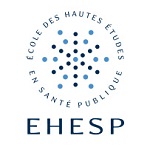When local initiatives meet national public policy agenda: The dynamics of innovation in integrated care [Conference Abstracts]
Abstract
Introduction: The increasing number of people in chronic conditions requires not only a growing number of diverse care and support services, but also a better articulation between the different providers. To reduce the fragmentation of the health care system, policy makers, professionals, and family and user-led organizations, are engaged in a permanent process of innovation and cooperation. Because the improvement of integrated care relies entirely on that collective dynamics, the latter has to be better understood.
Aims: Approach integrated care schemes through their life cycle, offer an interactive model explaining the dynamics of innovation, and identify the success factors that facilitate integration work in France.
Results: Comparing seven different integrated care schemes created in France over the past two decades, both for vulnerable elderly and for adults with disabilities, shows that their development follows a similar pattern – what we call the life cycle of integrated care schemes – made of three to four phases: emergence, building up, routine, and eventually disappearance. All along the process, local initiatives, usually conducted by pioneer physicians or family and user-led organizations, face national public policy agenda. Interactions occur through four key processes initiated by national-level policy makers: experimentation, assessment, conceptualization, and generalization. More specifically, these processes are meta-processes because they are fuelling schemes’ life cycles which are themselves organizational processes. Depending on the scheme you consider, the four meta-processes occured neither in the same order nor at the same pace. Hence the comparison helps us understand the factors that may restrict or facilitate the effective implementation of integration work. Finally, the in-depth study we realized on an emergent scheme devoted to the management of people with rare diseases’ care pathways, reveals the reciprocal
learning and prescription process between local political entrepreneurs and policy makers working at multiple levels.
Conclusions: Innovation is neither the work of a few pioneers nor the one of national policy makers, but a collective and interactive dynamics. The continuity of public funding is crucial in the process, as well as the existence of a resource project team at the national level in order to ensure equal treatment throughout the country.
Origin : Publisher files allowed on an open archive
